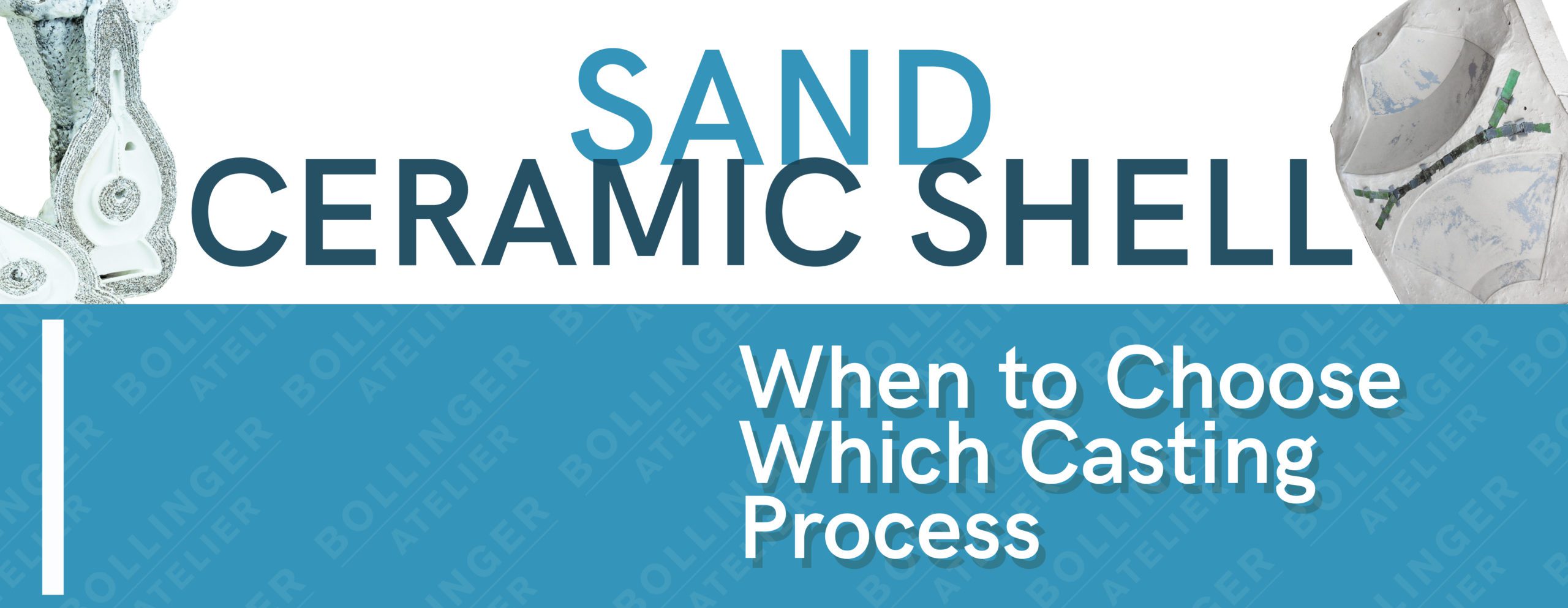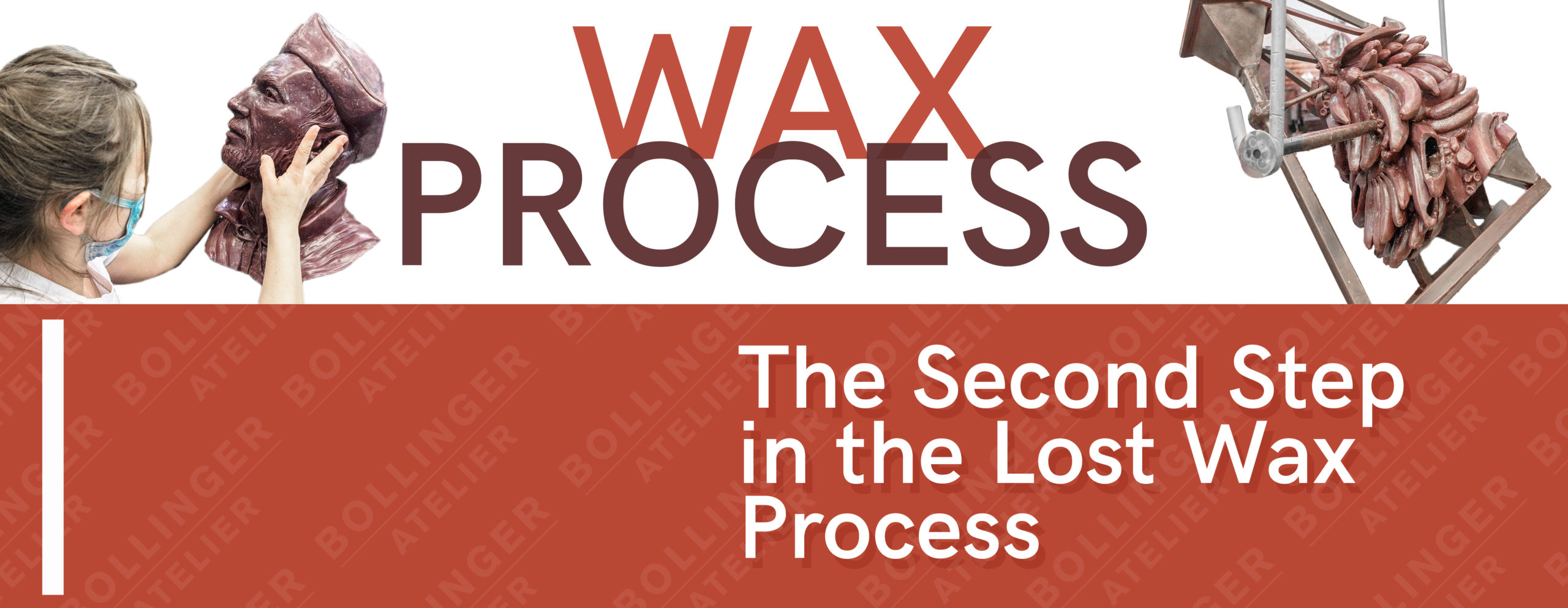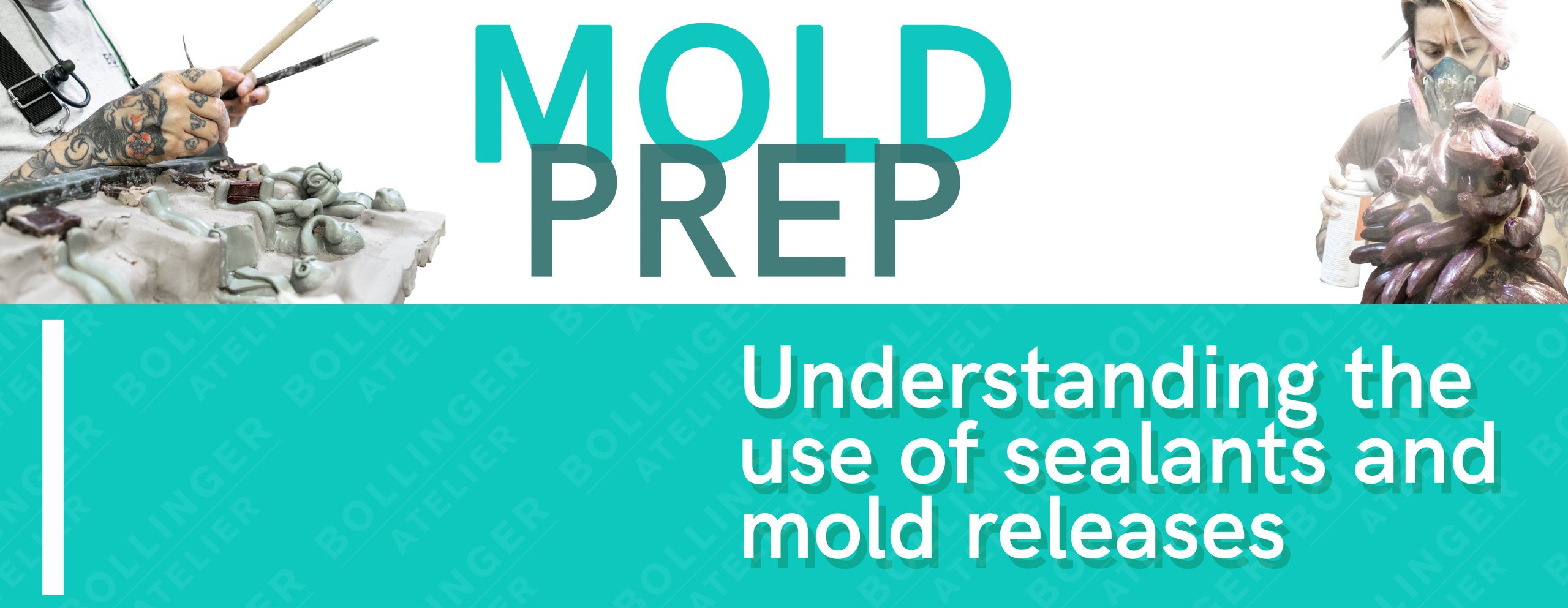Animations by Ron Lyons, Written by Daniel Mariotti, Photographs and Video by Daniel Mariotti
SAND CASTING
The typical process of creating a sand casting starts with the “cope” or the top of the mold. A pattern is placed in an enclosed “flask” or molding box where sand is then pounded in and around the pattern, creating a mold. This sand is typically infused with something for it to stick together, ours is a two-part resin that gets mixed in with the sand through an industrial auger.
Once the resin-bonded sand has time to harden it can be separated from the pattern and flipped over to be worked on.
Talc powder is used as a release agent between the pattern and the mold (and mold halves).
Once both sides of the sandmold are rammed and made, they get put together and a pouring cup is created (also out of sand) and glued on for the metal to be poured into.
Sand Casting requires a pattern or model of the object wanting to be created in metal. These patterns can be made out of anything as long as they are draftable. Draft means the taper on the sides of the pattern which are perpendicular to the parting plane that allows the pattern to be withdrawn from the mold without breaking the edges of the mold or the pattern itself.
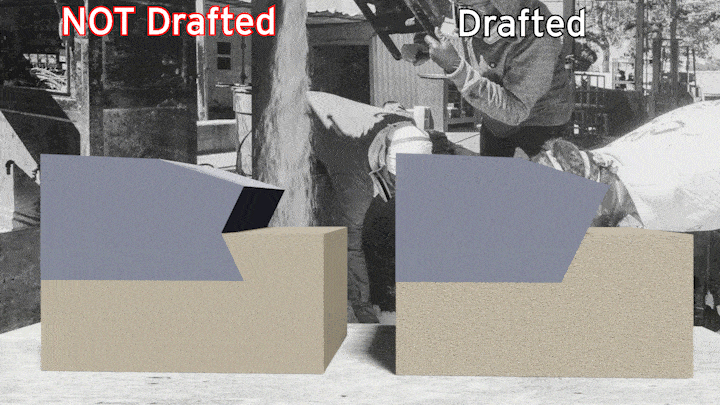
PROS:
- Cheap
- Can do larger objects
- Quicker/Short lead time
CONS:
- Not able to use a single mold to cast multiples
- Patterns get destroyed quicker
- Can’t mold complex objects
- Rougher surface quality
- More likely to have defects
- Dimensional accuracy is less than investment casting
CERAMIC SHELL (INVESTMENT CASTING)
Also known as Lost Wax Casting, the process for investment starts with making wax patterns from a mold. These patterns are then attached to a down sprue, adding gating and vents to make up what is called the “tree” which is the circulatory system of how the metal will flow through the piece. Small pieces can be cast with many on a single tree, where a larger, heavier piece would be parted to fit the slurry tanks and made on multiple trees.
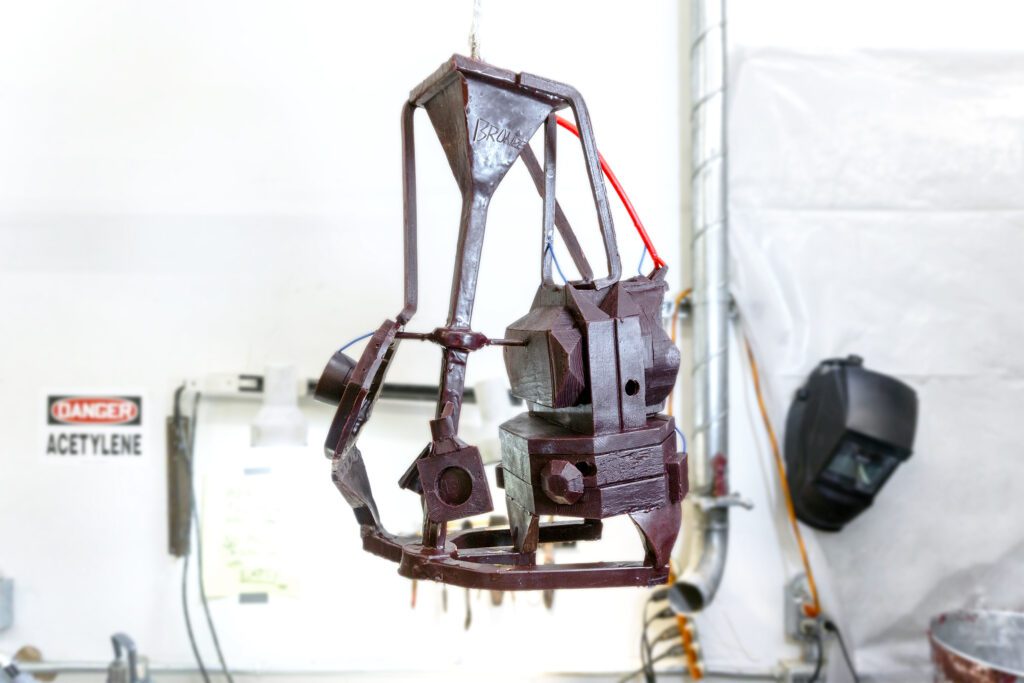
Once this is created and has time to cool and rest, the wax tree is coated in slurry, which is a mixture of liquid binder and flour refractory materials. When dried, this slurry forms a perfectly smooth ceramic-like surface that replicates the wax patterns inside. Between the layers of slurry, we coat it with different sizes of sand or stucco depending on the layer. This is done when the slurry is still wet. The sand or stucco is used to create a stronger mechanical lock between layers as well as stiffen the tree. You can apply the sand in a variety of different ways including rainfall sanding, using a fluidized bed, or by hand. We currently use two fluidized beds to cover our shells thoroughly and efficiently. The amount of layers needed is dependent on the pattern complexity, shape, and size.
Once the dipping sequence is complete, the wax gets “burned out” in our furnace, leaving behind a perfect cavity for the metal to flow into and fill. During this process, the shell is also fired and hardened which assists in strengthening the shell. The shell gets blown out, water tested, and prepped for pouring. For pouring, the shell is heated once again, taken out of the kiln, and embedded in a bed of sand.
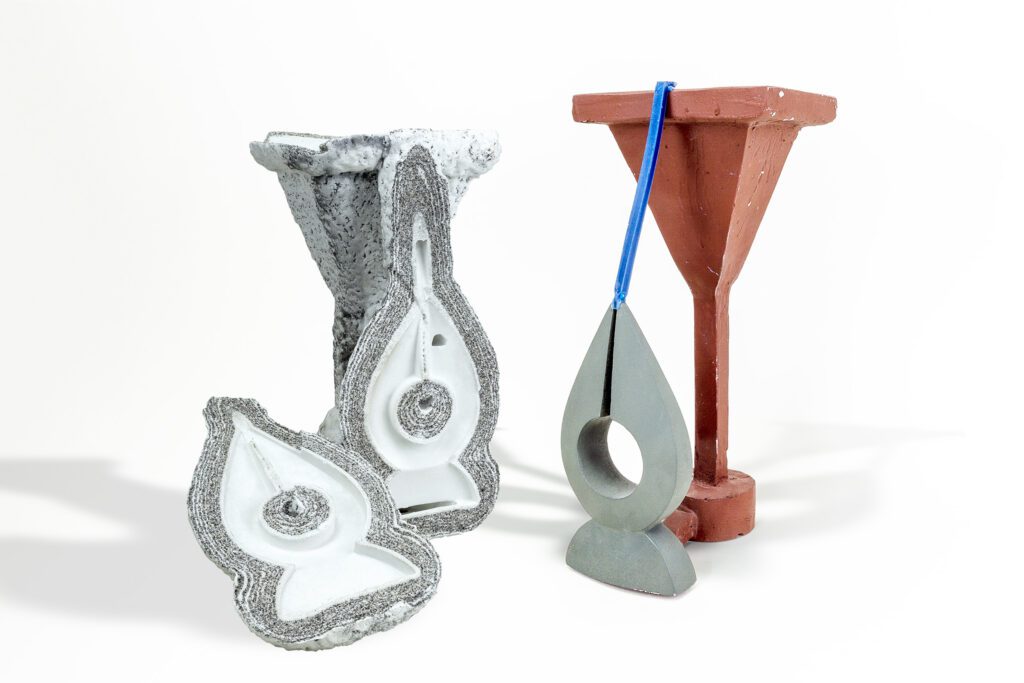
PROS:
- Can cast complex and intricate parts
- Can create many more sculptures out of this process from a single mold
- High-quality surface finish
- More effective utilization of metal
- Closer dimensional tolerances
CONS:
- Typically more expensive
- Requires longer production cycles
- Size limitations which may require pieces to be cast in sections
WHEN TO CHOOSE SAND OR INVESTMENT
Compared to sand casting, lost wax casting offers tighter dimensional tolerances and better surface finishes. This is why most sculptures are cast this way. So if you are looking to cast something that has a lot of detail and is a complex shape like a bundle of grapes, then investment would be the way to go. However, sand casting may be a better idea if you have large simple shapes like a textured tabletop. Because the patterns for these are made in plaster and hemp, they are strong and can be used multiple times for sand casting. Something softer like clay or wax would most likely get destroyed in the first pull.
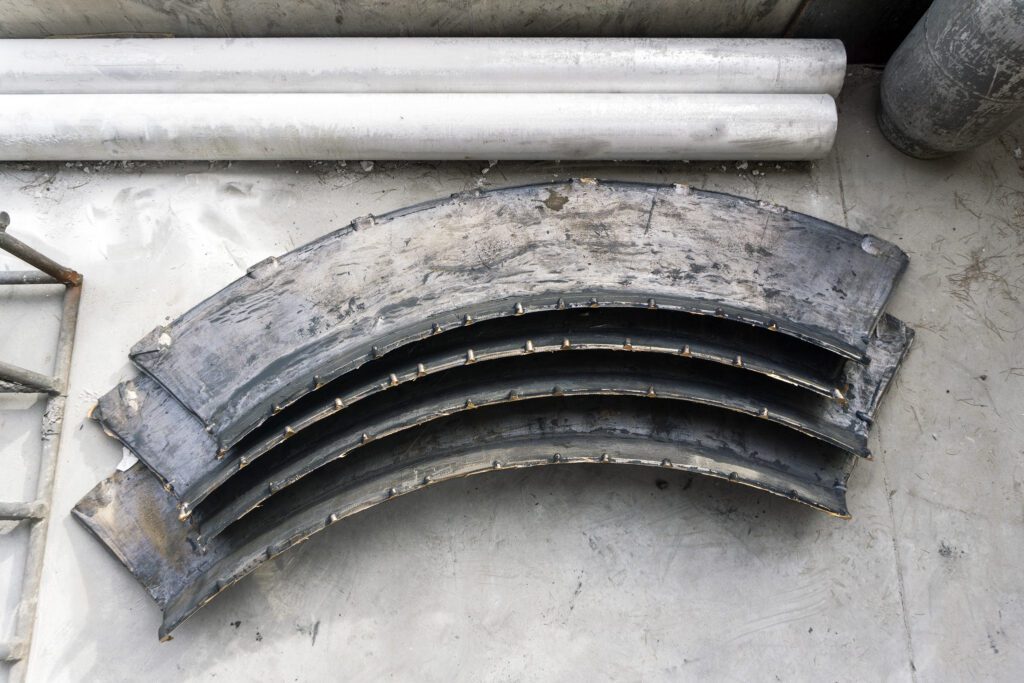
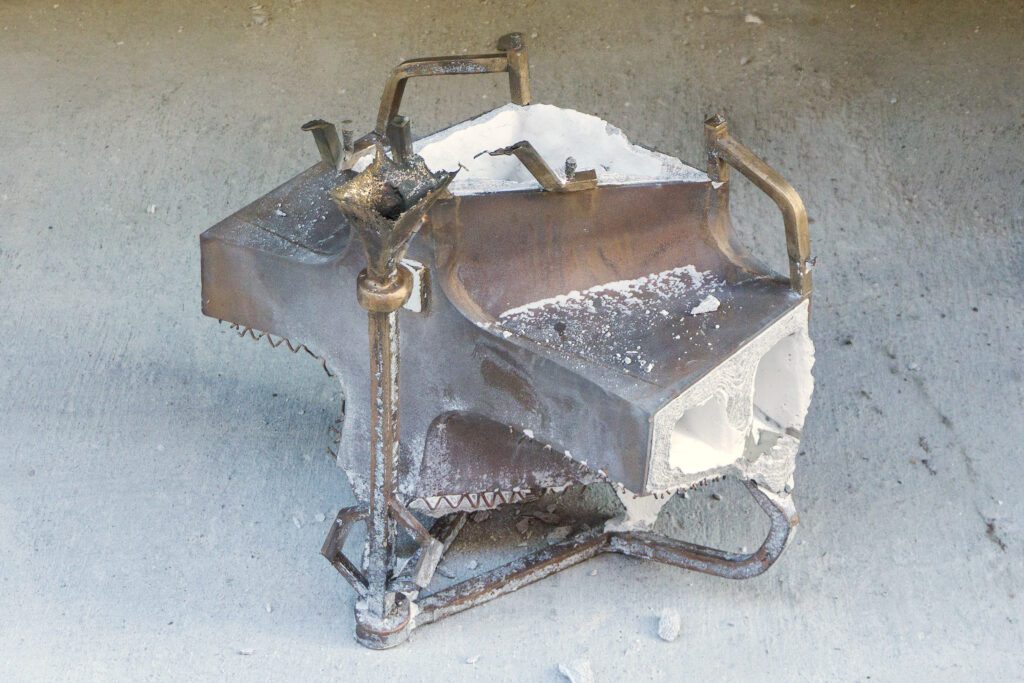
*Keep in mind that this is made for the lost wax casting process and our type of work specifically.

